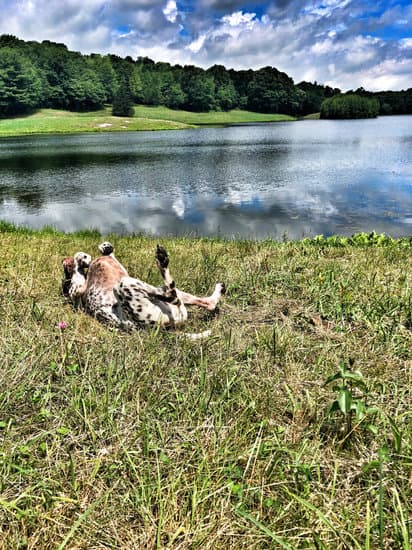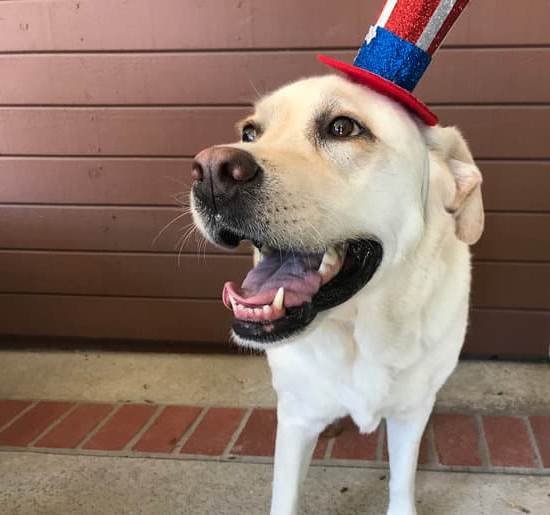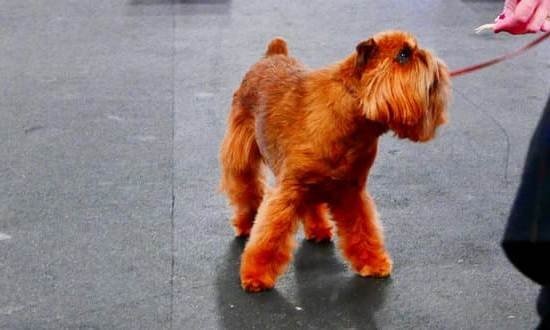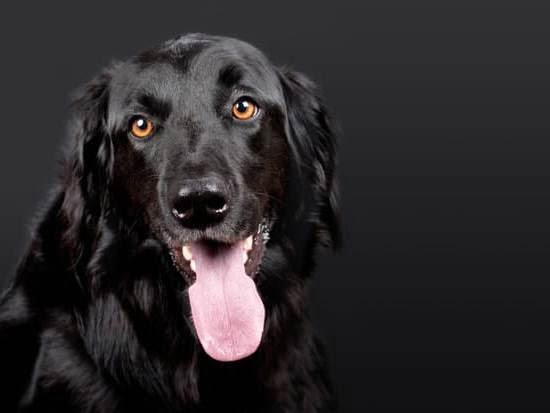What is the easiest dog to house train? House training a dog is an essential part of pet ownership, as it sets the foundation for a well-behaved and happy canine companion. In this article, we will explore the characteristics of an easily house-trained dog, provide a comprehensive list of top choices for the easiest dog breeds to house train, discuss factors to consider when house training a dog, and offer effective house training methods and tips for success.
House training a dog is crucial for creating a harmonious living environment and ensuring the well-being of both the pet and its owner. A well-trained dog is not only more enjoyable to be around but also has better social interactions with people and other animals. Therefore, understanding the importance of house training is fundamental for any responsible pet owner.
In the following sections, we will delve into the characteristics that make certain dog breeds easier to house train than others. We will also provide valuable insights into factors such as age, personality, and breed-specific traits that can influence the ease of house training. Additionally, we will explore effective methods and techniques for successful house training while addressing common challenges and offering practical tips for achieving positive results in this important aspect of pet care.
Characteristics of an Easily House-Trained Dog
When it comes to house training a dog, the breed of your furry friend can play a significant role in how easy or challenging the process may be. Certain dog breeds are known for their quick learning and high intelligence, making them more easily adaptable to house training. Understanding the characteristics of an easily house-trained dog can help you make an informed decision when choosing a breed that fits your lifestyle and training capabilities.
Intelligence and Trainability
One of the key characteristics to look for in an easily house-trained dog is their intelligence and trainability. Breeds that are highly intelligent and eager to please their owners tend to pick up on house training cues more quickly. These dogs are often able to understand commands and behaviors with less effort, making the house training process smoother.
Size and Exercise Needs
The size and exercise needs of a dog are also important factors to consider when looking for a breed that is easy to house train. Smaller breeds may have smaller bladders, requiring more frequent bathroom breaks, while larger breeds may be easier to housetrain due to their ability to hold their bladder for longer periods. Additionally, understanding the exercise needs of a specific breed can help in managing energy levels and preventing accidents in the house.
Temperament and Socialization
The temperament and socialization of a breed can also impact their ease of house training. Dogs with calm, balanced temperaments are often easier to train as they are less likely to become anxious or stressed during the process. Additionally, breeds that are naturally social and adaptable may have an easier time adjusting to new routines and expectations during house training.
By considering these characteristics, you can find a dog breed that is best suited for your lifestyle and comfort level when it comes to house training. Whether you prefer a small but intelligent breed or a larger yet obedient one, understanding these traits will help set realistic expectations for successful house training.
Easiest Dog Breeds to House Train
When it comes to house training a dog, it is important to consider the breed as some are easier to train than others. Certain characteristics and traits make some breeds more receptive to house training, making the process smoother for both the dog and their owner. If you’re wondering what is the easiest dog to house train, here are some top choices:
- Labrador Retriever: Known for their intelligence and eagerness to please, Labrador Retrievers are one of the easiest breeds to house train. They respond well to positive reinforcement and consistency.
- Poodle: Poodles are highly intelligent and can be quick learners when it comes to house training. Their alert and active nature makes them relatively easy to housetrain.
- Shih Tzu: Despite their small size, Shih Tzus can be surprisingly easy to house train due to their affectionate and obedient nature. With proper training techniques, they can quickly grasp good bathroom habits.
These are just a few examples of dog breeds that tend to be easier to house train, but it’s important to note that individual temperament and personality can also play a significant role in how easily a dog can be trained.
Factors such as age, current living situation, exercise routine, and daily schedule should also be taken into consideration when choosing a breed for ease of house training. It’s always best to do thorough research on different breeds and even consult with breeders or trainers before bringing a new furry friend into your home.
Factors to Consider When House Training a Dog
When considering house training a dog, it is important to take into account various factors that can impact the process. These factors include the age of the dog, its personality, and breed-specific traits that may affect their ability to be successfully house trained.
The age of the dog plays a crucial role in house training. Puppies have smaller bladders and higher energy levels, which means they will need more frequent potty breaks and may have accidents as they are still learning. On the other hand, older dogs may already have established habits that need to be changed through consistent training.
Additionally, every dog has its own unique personality that can influence how easily they can be house trained. Some dogs may be eager to please and quick learners, making them easier to train, while others may be more stubborn or independent, requiring more patience and consistency in training.
Furthermore, breed-specific traits should also be taken into consideration when choosing a dog for house training. Certain breeds are known for being easier to house train due to their intelligence or natural cleanliness, while others may present more of a challenge due to their instincts or physical characteristics.
| Factor | Impact on House Training |
|---|---|
| Age of the Dog | Different ages require different approaches to house training |
| Personality of the Dog | Can determine how quickly the dog learns and follows instructions |
| Breed-Specific Traits | Certain breeds have natural tendencies that can affect house training success |
Effective House Training Methods
House training a dog can be a challenging process, but with the right methods and approach, it can also be very rewarding. When it comes to effective house training methods, positive reinforcement, consistency, and patience are key elements to success. Positive reinforcement involves rewarding your dog for exhibiting the desired behavior, while consistency and patience require dedication and time to establish a routine and set realistic expectations.
Positive reinforcement is one of the most effective methods for house training a dog. This involves rewarding your dog with treats, praise, or toys when they eliminate in the appropriate place.
By associating this positive experience with the act of going potty outside or in a designated area indoors, your dog will be more inclined to repeat this behavior. It’s important to give the reward immediately after the desired behavior is exhibited so that your dog makes the connection between the behavior and the reward.
Consistency is also crucial when it comes to successful house training. This means establishing a regular feeding schedule for your dog and taking them outside or to their designated potty area at specific times throughout the day.
By creating a routine and sticking to it, you are helping your dog understand when and where they should go potty. Additionally, being consistent with your commands and praise will reinforce good behavior and make it easier for your dog to understand what is expected of them.
Finally, patience is essential when house training a dog. Every dog learns at their own pace, so it’s important not to get discouraged by setbacks or accidents. Remaining patient and calm will help create a positive learning environment for your pet and facilitate their understanding of where they should eliminate.
| House Training Method | Description |
|---|---|
| Positive Reinforcement | Rewarding your dog with treats, praise or toys when they eliminate in the appropriate place. |
| Consistency | Establishing a regular feeding schedule and taking them outside at specific times throughout the day. |
| Patience | Remaining patient and calm despite setbacks or accidents. |
Common Challenges in House Training and How to Overcome Them
House training a dog can come with its own set of challenges, regardless of the breed. It’s important for dog owners to be aware of common difficulties they might face and learn how to overcome them effectively. By understanding these challenges and being prepared with the right strategies, house training can be a more positive and successful experience for both the owner and the dog.
Accidents in the House
One of the most common challenges in house training is dealing with accidents inside the house. This is especially common during the early stages of training when a dog is still learning where it’s appropriate to relieve itself. Accidents can be frustrating for owners, but it’s important to remain patient and consistent in guiding the dog towards the desired behavior. Cleaning accidents promptly and thoroughly with an enzymatic cleaner can help prevent re-marking in the same spot.
Separation Anxiety
Some dogs may struggle with separation anxiety, which can lead to accidents in the house when left alone. Separation anxiety often manifests as destructive behavior or excessive barking as well. To address this challenge, it’s essential to gradually acclimate the dog to being alone, establish a predictable routine before leaving, and provide plenty of mental stimulation through toys and puzzle feeders.
Inconsistent Training Methods
Inconsistency in training methods can confuse a dog and make house training more challenging. It’s important for all family members or caregivers to use uniform commands and reinforcement techniques. This ensures that the dog receives clear, consistent signals about what is expected behavior. Additionally, using positive reinforcement consistently throughout training helps reinforce good habits effectively.
Tips for Successful House Training
House training a dog requires patience, consistency, and a well-established routine. Setting realistic expectations is also crucial in achieving success in this aspect of dog ownership. Here are some tips for successful house training that will help you establish a routine and maintain realistic expectations:
- Establish a consistent feeding schedule: Feeding your dog at the same times each day will help regulate their bathroom habits and make it easier for you to anticipate when they need to go outside.
- Designate a potty area: Choose a specific spot in your yard where you want your dog to do their business. This will help them associate that area with going to the bathroom, making the process more predictable for both of you.
- Take frequent potty breaks: Especially during the early stages of house training, take your dog outside frequently throughout the day, such as after meals, naps, playtime, and before bedtime.
- Use positive reinforcement: When your dog goes to the bathroom outside, be sure to praise and reward them. This positive reinforcement will help them understand that going outside is what you want them to do.
Setting realistic expectations is important when it comes to house training. Understand that accidents will happen, especially during the learning phase. It’s essential to remain patient and avoid punishment if your dog has an accident indoors. Punishing them could create fear or anxiety around going potty in front of you, making it harder for them to learn.
Consistency is key in establishing a routine for successful house training. Consistently following the same schedule and using the same commands when taking your dog outside will help reinforce good potty habits. By setting realistic expectations and maintaining a regular routine, you can successfully house train even the most stubborn or difficult breeds. Remember that each dog is unique, so adjustments may be needed depending on their individual personality and learning style.
Conclusion
In conclusion, when it comes to choosing the right dog breed for house training, it’s important to consider several factors. The easiest dog to house train may vary depending on your lifestyle, living situation, and commitment level. While certain breeds may have a reputation for being easier to house train, it ultimately comes down to individual characteristics and the methods used in training.
It’s important to remember that age, personality, and breed-specific traits all play a role in how easily a dog can be house trained. Additionally, the effectiveness of positive reinforcement, consistency, and patience cannot be overstated when it comes to successful house training. It’s also crucial to establish a routine and set realistic expectations for the process.
Ultimately, the key to house training success lies in choosing a dog breed that aligns with your lifestyle and commitment level. Whether you opt for a breed known for its ease of training or not, the dedication and effort put into the process will make all the difference. With proper research and understanding of what it takes to successfully house train a dog, you’ll be well on your way to finding the perfect furry companion for your home.
Frequently Asked Questions
What Dog Breed Is Hardest to Potty Train?
Some dog breeds are notoriously difficult to potty train, with strong-willed and independent breeds like Dachshunds, Chihuahuas, and Bulldogs often being cited as challenging. These breeds may require extra patience and consistency when it comes to housebreaking.
What Breed of Dog Is Easiest to House Train?
On the other hand, certain breeds are known for their ease of house training. Breeds like the Labrador Retriever, Golden Retriever, and Poodle are often recognized for their intelligence and willingness to please, making them more receptive to potty training than some other breeds.
What’s the Most Low Maintenance Dog?
When it comes to low maintenance dogs, several breeds come to mind. The French Bulldog is a popular choice due to its small size and minimal grooming needs. Other low maintenance options include the Chihuahua, Boston Terrier, and Beagle – all of which typically require less grooming and exercise compared to some other breeds.

Welcome to the blog! I am a professional dog trainer and have been working with dogs for many years. In this blog, I will be discussing various topics related to dog training, including tips, tricks, and advice. I hope you find this information helpful and informative. Thanks for reading!





